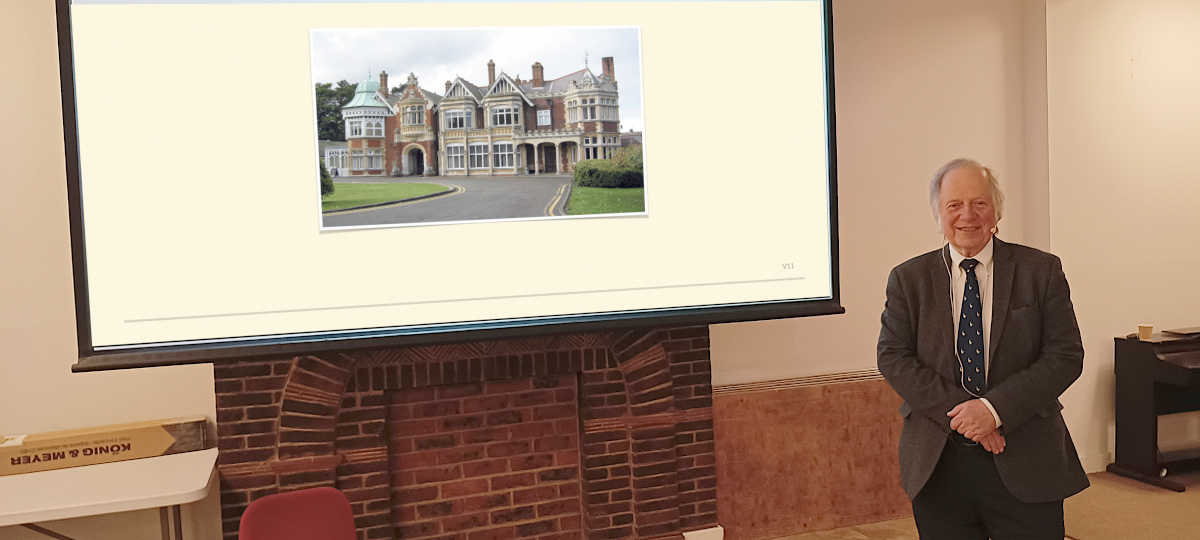Our speaker at our Monthly Meeting on Wednesday 22 May 2024 was Mike Barbakoff, who opened up the history of the Bletchley Park, the Government Code and Cypher School in World War II – known to some as “Station X”.
Mike is a volunteer at Bletchley Park and took us through the difficult period between the two World Wars when radio communication was becoming popular with both the military and civilian worlds. However, radio communication is available to all who listen, so some means of encryption was required if the transmission were to be kept secret. Encrypting important messages is an age old problem, with examples going back many thousands of years!
Initially there were two separate code and cypher schools in the UK, one run by the Military (MI1b) and the other run by the Admiralty (Room 40). With notable foresight, the two schools were eventually merged into one school, located in St James in Central London. After the Spanish Civil War, bombing of cities was recognised as an inevitable outcome of modern warfare, and a search was conducted to find a suitable location away from the cities and away from the centres of strategic industries. Bletchley Park was seen as a suitable location, well-served by road and rail, and with easy access to the seats of learning in Oxford and Cambridge.
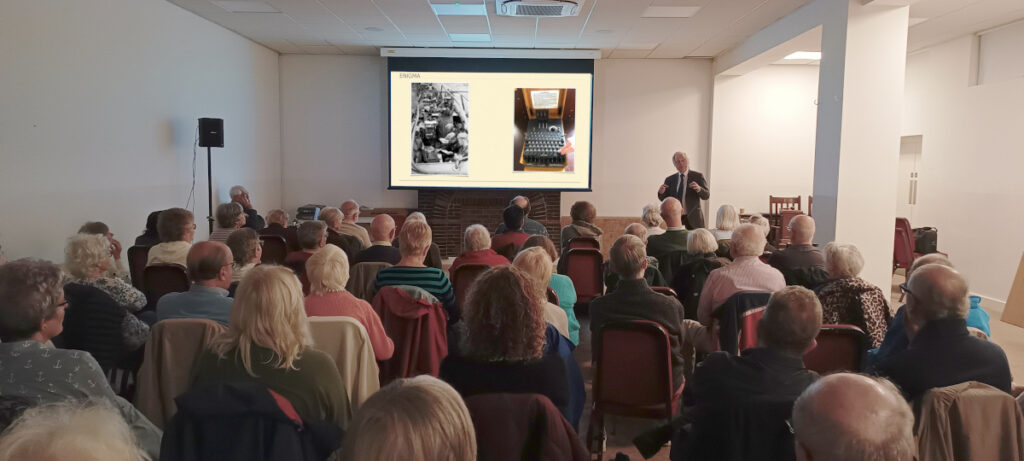
Meanwhile, a machine that could encrypt and decrypt messages appeared in Germany and was immediately protected by patents. The Enigma cypher machine had so many steps of encryption built into it that guessing the key to decrypt a message was ‘almost’ impossible. Mike had calculated that the chance of guessing the key at one in 130,000 million, million, million! A means of tackling the task of decryption required brilliant minds, and these were duly found under the leadership of Cdr Alistair Denniston and Admiral Hugh Sinclair.
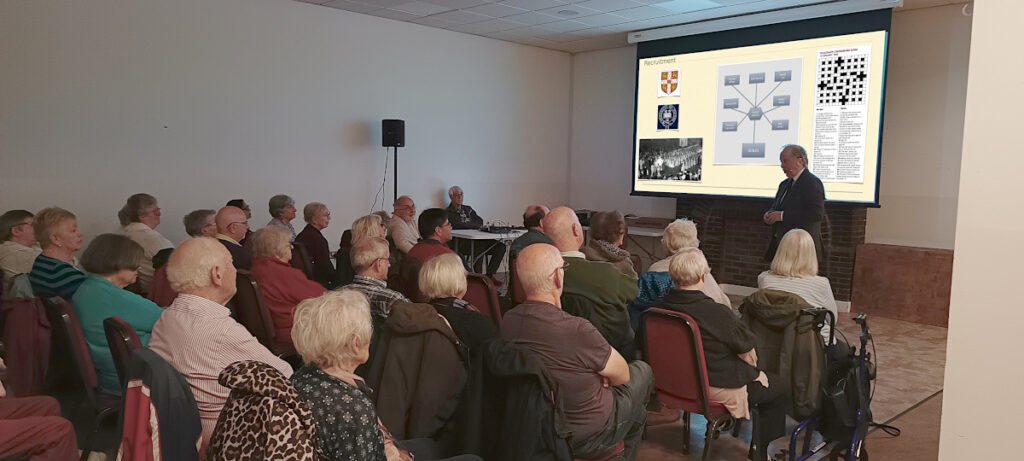
Mike then provided his audience with the chance to experience a recruitment interview for those working at Bletchley Park. Initially 150 were needed to set up the school, and this quickly rose to 450 at the outbreak of World War II. So important was the work done there that the need for secrecy was imperative. Secrecy with 450 people is one thing, but by the end of the war, 9,000 people were working there, around the clock in three shifts. 130 drivers were employed full time ferrying the staff into work and back to their lodgings every day.
Many great minds found their way to Bletchley Park, and Mike provided information on many of them and their contributions. As well as names like Alan Turing, we learned about the contributions of Dilly Knox, Gordon Welchman, Mavis Lever and Margaret Rock. He highlighted the importance placed on female code breakers – something that the leaders at Bletchley Park were quick to recognise and utilise. The cracking of the Enigma code would have taken much longer than it actually took without the contributions of many brave Polish code breakers, and Mike cited three of them: Henryk Zigalski, Jerzy Rozycki and Marian Rejewski.
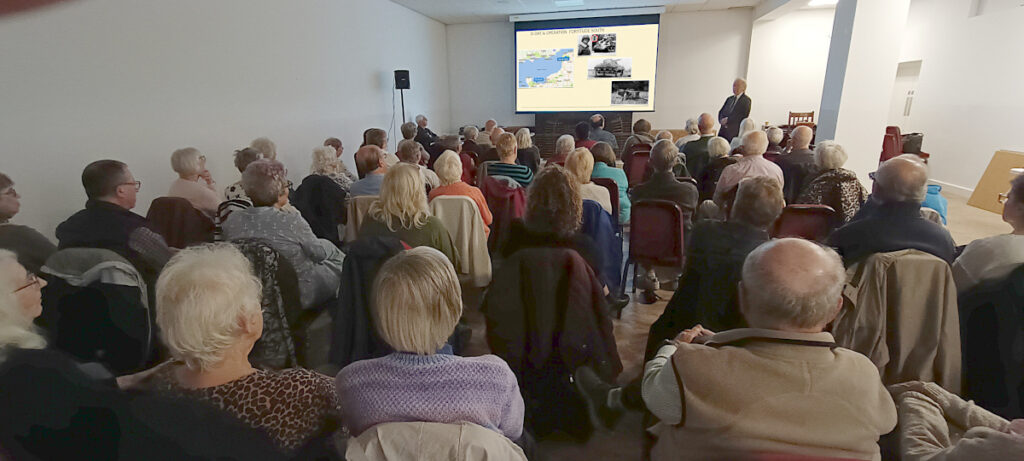
However, Enigma was not the end of the story. The Nazi High Command developed an even more complex coding algorithm that worked with teleprinters, assigned the codename FISH. This was several orders of magnitude more complex that Enigma, but was eventually broken thanks to a lazy test signal which was captured and decrypted by John Tiltman and Bill Tutte. This code was taking days to decrypt when speed of decrypting orders from the Nazi High Command was the absolute imperative. The solution was dreamed up Max Newman and Tommy Flowers in the form of an electronic computer named Colossus, and the information it produced was nicknamed ULTRA. ULTRA provided our leaders with decrypted enemy high command messages in a timely fashion – typically an hour or two after the message was received at Bletchley Park. The importance of Ultra was immediately recognised by Prime Minister Winston Churchill, and extra resources were made available to Bletchley Park.
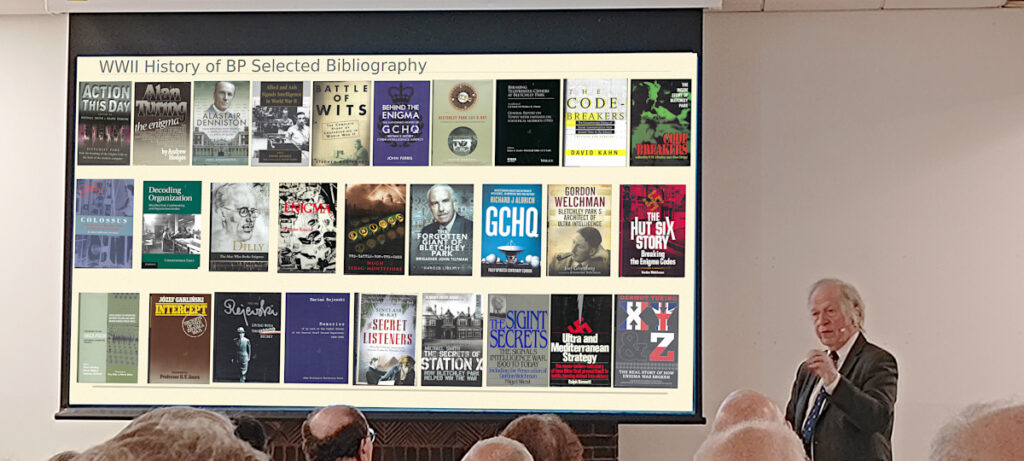
Bletchley Park and its work remained secret until 1974 although the unit closed in 1946. Would that be possible today? The breaking of the High Command Cypher named ULTRA was kept secret until 2000. Those that served around the clock at Bletchley Park and its outstations were finally recognised for their service in 2009.
This was a truly fascinating talk delivered by an expert in a professional fashion and very much enjoyed by all those present.

